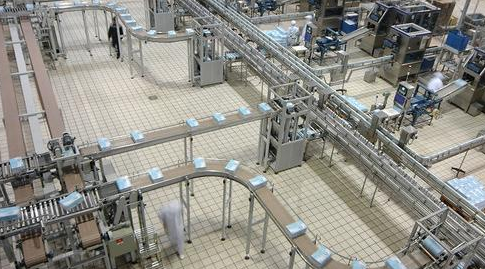Trump blames the cause of the US decline industry on robots
The U.S. media has pointed out that for Mr. Trump, if he must find a target to demonize and blame for the loss of blue-collar jobs in his favored industries, it shouldn't be China or "bad trade deals." Instead, he should look at robots.
According to reports, three decades ago, U.S. steel mills employed around 188,000 workers, but today that number has dropped to about 86,000. President Trump is facing thousands of unemployed workers—many of whom voted for him—and is trying to reverse the trend by imposing high tariffs. However, this approach won’t help the so-called forgotten workers.
As many have pointed out, there are numerous reasons to believe that the recent steel tariffs introduced by the Trump administration will result in significant economic and national security errors. These tariffs will hurt many industries that rely on steel as a raw material, while only benefiting a small group, like the automotive sector, which will end up raising product prices for American consumers.

Although the high tariffs are framed as a way to "punish China," China isn’t even among the top ten sources of steel imports to the U.S. Instead, the tariffs will mainly affect allies like Canada. These countries have already threatened retaliation, potentially harming American workers further.
According to the report, these tariffs are likely to create more losers than winners in the U.S., and it's unclear whether they’ll truly benefit the steel industry. In fact, current U.S. steel output is similar to what it was 30 years ago, but employment has been cut in half—largely due to technological advancements, or simply because of automation.
This trend is not unique to steel. As Chad Sivoson, an economics professor at the University of Chicago’s Booth School of Business, explained, “The more we become efficient at manufacturing, the fewer people we need.†The steel industry has evolved over the past few decades, shifting from large, vertically integrated plants to smaller, more efficient micro-factories that recycle steel and require fewer workers.
Trump also imposed high tariffs on aluminum, mirroring the steel issue. While the aluminum industry has seen productivity gains, some jobs have moved overseas. However, these jobs haven’t gone to China or other low-cost countries, but rather to places like Iceland, Canada, and Norway—countries with access to cheap geothermal or hydroelectric power, which is essential for melting aluminum.
Imposing high tariffs on aluminum won’t reduce production costs in the U.S. Instead, American manufacturers using aluminum may move their entire operations abroad to avoid the additional taxes, taking U.S. jobs with them.
This isn’t the first time Trump has blamed the decline of certain industries on nostalgia for outdated models. His policies often reflect a desire to restore the past, even when the real causes are more complex and rooted in technological change and global shifts in production.
Carbon Fiber Insulation Material
Carbon Fiber Insulation Material,Rigid Carbonized Felt,Perforated Heat Insulation Board,Silicon Carbide Carbon Fiber Insulation Material
HuNan MTR New Material Technology Co.,Ltd , https://www.hnmtr.com